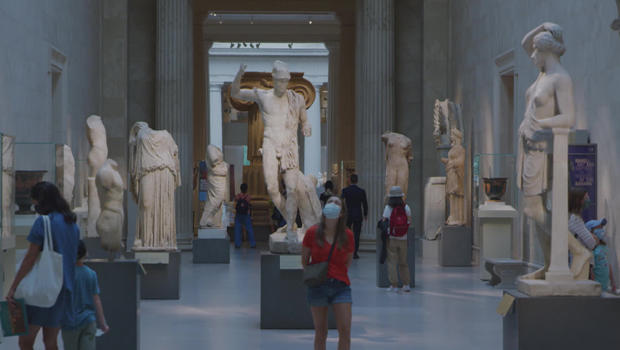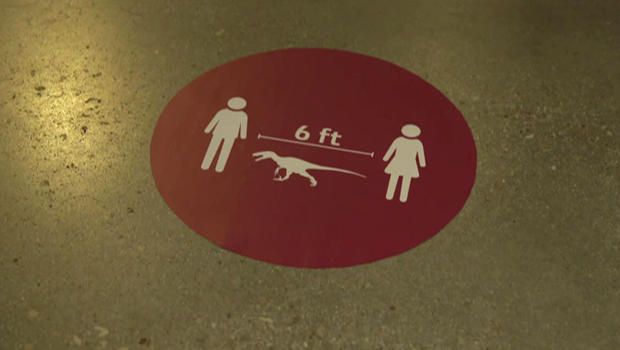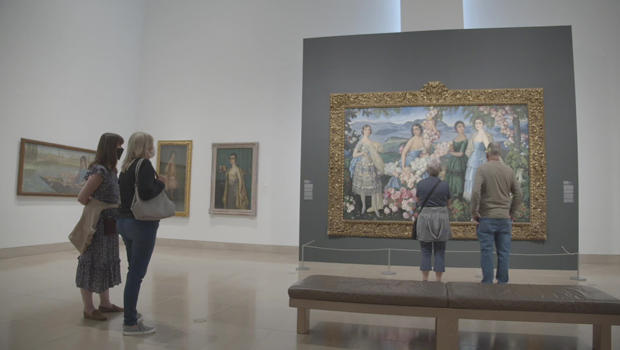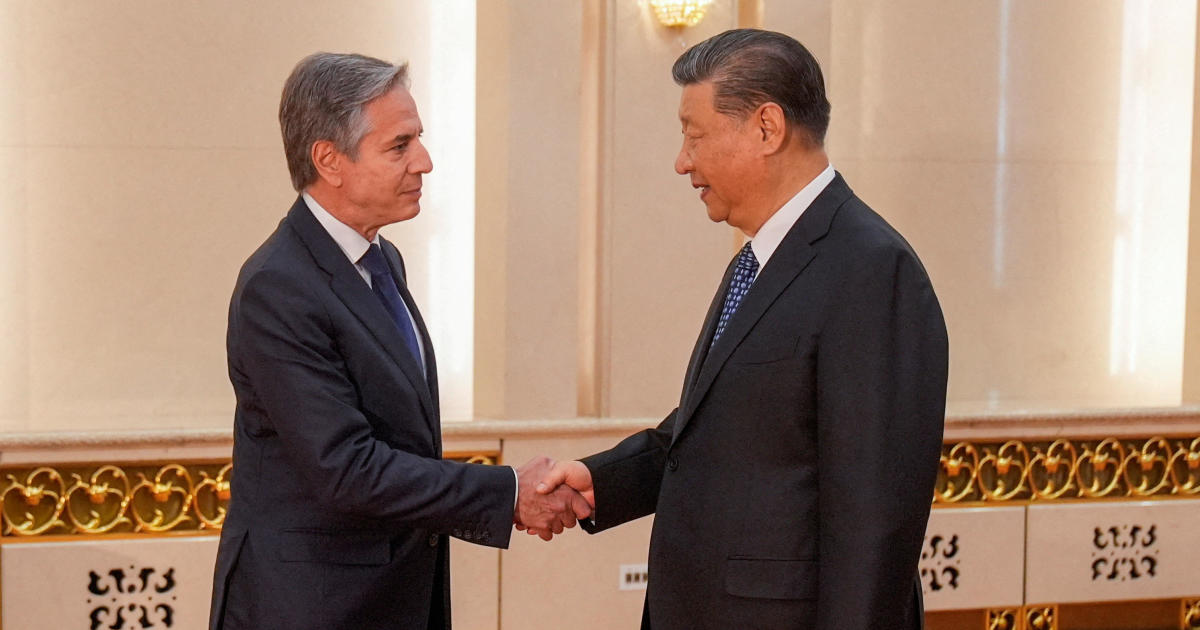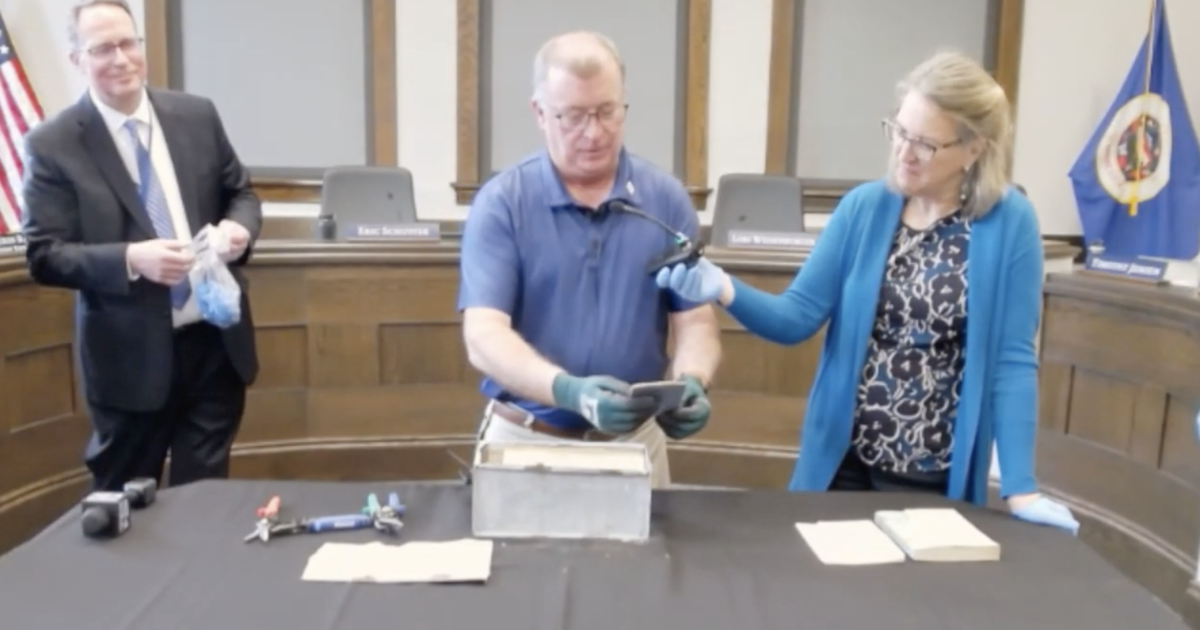Reopening the art world in a time of COVID
This year, the Metropolitan Museum of Art planned to celebrate its 150th anniversary. However, 2020 had other plans. On March 13, coronavirus forced the Met to close its doors. They wouldn't open for another six months.
"That was in some ways the hardest part of this, to close the museum at a time when people most needed the museum," said Daniel Weiss, the president and CEO of the Metropolitan Museum of Art.
"For 150 years, we've been there for the community. In every other moment of national challenge or crisis, people have come to the museum for comfort, and we weren't able to offer that."
Prior to this pandemic, he said, the longest the museum had closed was about three days. "Snow storms, power outages, those things we can understand," Weiss said. "But in the Great Pandemic of 1918, we were not closed. So, this is off-the-charts, new experience for everybody."
New for both museums and visitors. Masks, timed ticket entries, temperature checks, and plastic partitions have become the new normal.
Jason Cryan, director of the Natural History Museum of Utah in Salt Lake City, show correspondent Serena Altschul the proliferation of hand sanitizers and measures to enforce social distancing. "Opening the doors in an indoor venue, we needed to make sure that we kept people separate, spaced apart," he said. "Instead of having people come in and explore on their own, we needed to be a little bit more proactive and help them navigate safely."
That meant figuring out how to make a child-friendly museum COVID-friendly, too.
Of course, there hasn't been a quick solution for everything. Some museums have had to postpone or even cancel long-planned exhibits. Others remain closed.
Only five of the Smithsonian Institution's 19 museums, and its National Zoo, have opened. Secretary of the Smithsonian Lonnie Bunch said, "What you don't want to be is, you don't want to be a petri dish, right? You don't want to be a place where people get sick. What you want to be is a place where people get well, emotionally and spiritually.
"I'm much more comfortable saying even as we open, if the virus gets worse or if the numbers spike we'll close, because I think that's where we are," said Bunch. "We have to be nimble in order to protect the public."
And while reopening museums has been a challenge, keeping them open for the long term will be another, uphill battle.
The Met's Daniel Weiss said, "Over the period of this pandemic, we expect to lose about $150 million. We had to reduce our staff through voluntary retirement, layoffs and furloughs by about 21%, just over 400 people. It was very painful, very difficult to do."
Altschul asked, "If this has caused such an effect and taken such a toll on the Met, what are other, smaller museums going to do? How do they exist through this?"
"Well, frankly, you ask, I think, exactly the right question," Weiss replied. "I don't know. We're very fortunate that we will get through this. Not everyone will."
According to a survey conducted by the American Alliance of Museums, one-third of museums may permanently close in the next year.
Laura Lott is president of the Alliance, which represents 4,500 member institutions. "Most museums get 50% of their operating budgets from earned sources – from ticket sales, special programming and purchases of tickets to those things, café and gift shop sales, event rentals," Lott said. "And that all went to zero in March. Most predict that it's going to take months, if not years, for that kind of revenue to come back."
It's a deficit that has at least one museum considering what's long been taboo: selling parts of their collection to raise capital.
Among museums that have already announced permanent closures are the World of Speed Motorsport Museum in Wilsonville, Ore., and the Annenberg Space for Photography in Los Angeles.
"I'm afraid that we'll see more closures as the economy takes its time coming back," Lott said.
As for the museums that do survive, Lott said they're needed now more than ever.
"They have weathered previous crises, recessions and the Great Depression in many cases," she said. "And there is this intangible value to museums that people do appreciate. And I'm optimistic that the museums that do make it through this time will emerge stronger, more connected to their communities, and continue to be vital to the human experience."
The New Season: Fall 2020
So, how does the art world launch its new season during a time of COVID? In a number of ways.
Start with the number 150.
The Metropolitan Museum of Art and the American Museum of Natural History in New York are both celebrating their 150th anniversaries this year, as is the Museum of Fine Arts, Boston.
- Celebrating 150 years at the Metropolitan Museum of Art
- Making the Met, 1870-2020 (slideshow)
- 150th Anniversary Celebration, American Museum of Natural History
Socially distant exhibitions and events – artfully done, of course – are the rule.
The Art Institute of Chicago is saying "Bonjour" to Claude Monet, both within its halls and at the Monet-inspired gardens of Garfield Park.
- Monet and Chicago (though January 18, 2021), at the Art Institute of Chicago
The Dallas Museum of Art is featuring "Women in Modern Mexican Art" inside its galleries as well as online.
- Flores Mexicanas: Women in Modern Mexican Art (through January 10, 2021), at Dallas Museum of Art | Virtual tour
While in Bentonville, Arkansas, the Crystal Bridges Museum of American Art is home to a show-stopping display of outdoor lights.
- North Forest Lights (through April 4, 2021), at Crystal Bridges Museum of American Art
For more info:
- Metropolitan Museum of Art, New York City
- Natural History Museum of Utah, Salt Lake City
- American Alliance of Museums
- Smithsonian Institution, Washington, D.C.
Story produced by Sara Kugel and Julie Kracov. Editors: Remington Korper and Lauren Barnello.
